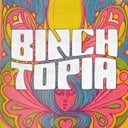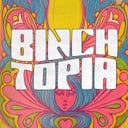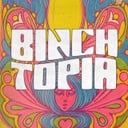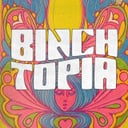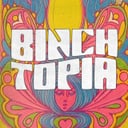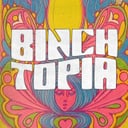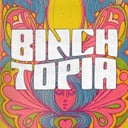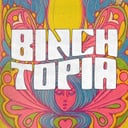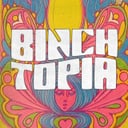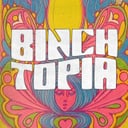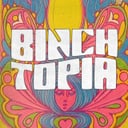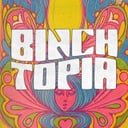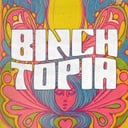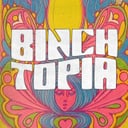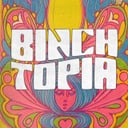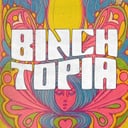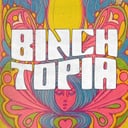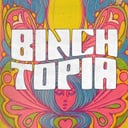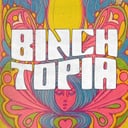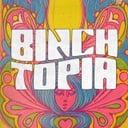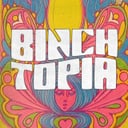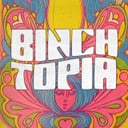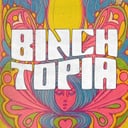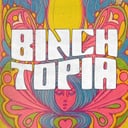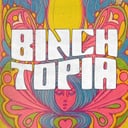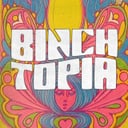
The Economy of Outrage
This week, the girlies tackle rage bait: the content that’s engineered to make you mad and keep you scrolling. From gutting historic homes to incendiary Republican rhetoric, they explore how anger became a content strategy and why we keep falling for it. They trace the long history of provocation, once a way to challenge power and now just another feature of your FYP, breaking down how rage bait works, who benefits from it, and why nothing feels shocking anymore. Digressions include the beauty of riding a train, knowing conservative content creators in real life, and the age-old question: does being a woman count as rage bait? We’re going on tour!!!! Find tickets at This episode was produced by Julia Hava and Eliza McLamb and edited by Allison Hagan. Research assistance from Kylie Finnigan. To support the podcast on Patreon and access 50+ bonus episodes, mediasodes, zoom hangouts and more, visit patreon.com/binchtopia and become a patron today. SOURCES $5.2m for a duct-taped banana: has the buyer of Maurizio Cattelan’s artwork slipped up? 10 Works of Art That Made People Really Mad 100 years later Duchamp’s ‘Fountain’ still influential Against Empathy by Paul Bloom Anger is an approach-related affect: Evidence and implications. Antisocial Behavior in Online Discussion Communities Ape and Human Cognition: What's the Difference? Chris Ofili: Can art still shock us? Chris Ofili, The Holy Virgin Mary Emotion Shapes the Diffusion of Moral Content Facebook Manipulated User News Feeds To Create Emotional Responses How A Urinal Changed Art History: The Duchamp Fountain How Upton Sinclair’s ‘The Jungle’ Led to US Food Safety Reforms How (and where) does moral judgment work? How the Shock Jock Became the Outrage Jock Marcel Duchamp: The Forefather of Conceptual Art More Transparency and Less Spin Movement, Affect, Sensation Musk’s Political Posts Online hate speech victimization: consequences for victims’ feelings of insecurity Piss Christ by Andres Serrano Social Influenc...

The Economy of Outrage
This week, the girlies tackle rage bait: the content that’s engineered to make you mad and keep you scrolling. From gutting historic homes to incendiary Republican rhetoric, they explore how anger became a content strategy and why we keep falling for it. They trace the long history of provocation, once a way to challenge power and now just another feature of your FYP, breaking down how rage bait works, who benefits from it, and why nothing feels shocking anymore. Digressions include the beauty of riding a train, knowing conservative content creators in real life, and the age-old question: does being a woman count as rage bait? We’re going on tour!!!! Find tickets at This episode was produced by Julia Hava and Eliza McLamb and edited by Allison Hagan. Research assistance from Kylie Finnigan. To support the podcast on Patreon and access 50+ bonus episodes, mediasodes, zoom hangouts and more, visit patreon.com/binchtopia and become a patron today. SOURCES $5.2m for a duct-taped banana: has the buyer of Maurizio Cattelan’s artwork slipped up? 10 Works of Art That Made People Really Mad 100 years later Duchamp’s ‘Fountain’ still influential Against Empathy by Paul Bloom Anger is an approach-related affect: Evidence and implications. Antisocial Behavior in Online Discussion Communities Ape and Human Cognition: What's the Difference? Chris Ofili: Can art still shock us? Chris Ofili, The Holy Virgin Mary Emotion Shapes the Diffusion of Moral Content Facebook Manipulated User News Feeds To Create Emotional Responses How A Urinal Changed Art History: The Duchamp Fountain How Upton Sinclair’s ‘The Jungle’ Led to US Food Safety Reforms How (and where) does moral judgment work? How the Shock Jock Became the Outrage Jock Marcel Duchamp: The Forefather of Conceptual Art More Transparency and Less Spin Movement, Affect, Sensation Musk’s Political Posts Online hate speech victimization: consequences for victims’ feelings of insecurity Piss Christ by Andres Serrano Social Influenc...

